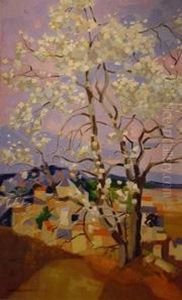Georges-Hippolyte Lambert Paintings
Georges-Hippolyte Lambert was a French painter who lived during the 19th century. Born on May 16, 1808, in Saint-Omer, France, Lambert developed an interest in art at a young age and pursued his passion throughout his lifetime. Although not as widely recognized as some of his contemporaries, Lambert contributed to the rich tapestry of French art during a period marked by significant cultural shifts and the emergence of various art movements.
Lambert's early life and education in the arts are not extensively documented, but it is known that he was active during a time when the Romantic movement was giving way to Realism. His work, however, did not fully align with the dominant movements of his time. Instead, Lambert's style was characterized by a blend of traditional techniques and a personal interpretation of his subjects. He primarily focused on portraiture and genre scenes, capturing the essence of his subjects with a nuanced touch and attention to detail.
Throughout his career, Lambert exhibited his work at various salons and galleries, enjoying the patronage of a modest circle of art collectors and enthusiasts. His paintings often depicted the daily life of people, imbued with a sense of realism and an eye for the subtleties of human expression. Despite his skill, Lambert did not achieve the same level of fame as some of his peers, such as Eugène Delacroix or Gustave Courbet, and as a result, his work remained somewhat in the shadow of these more prominent figures.
Georges-Hippolyte Lambert's later years saw him continue to paint, although his output and public presence waned. He passed away on January 15, 1897, in Paris, and left behind a body of work that, while not extensively celebrated, provides insight into the lesser-known corners of French art during the 19th century. Today, Lambert's paintings can be found in private collections and occasionally appear at auctions, offering a glimpse into the life and times of a dedicated artist whose legacy is a quiet but enduring part of art history.

